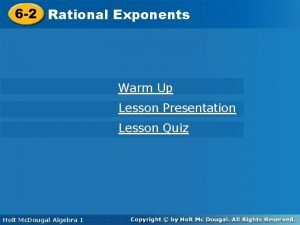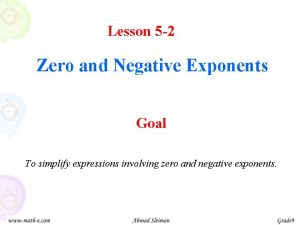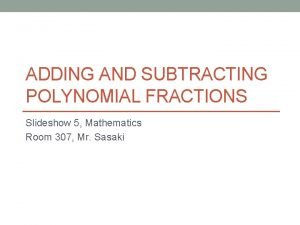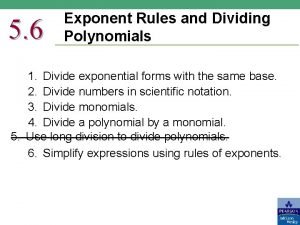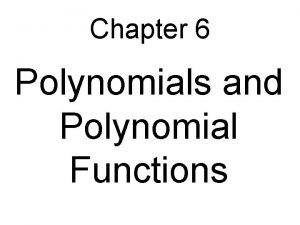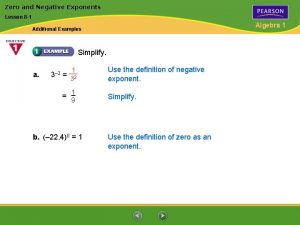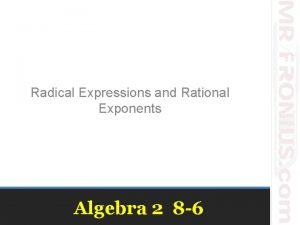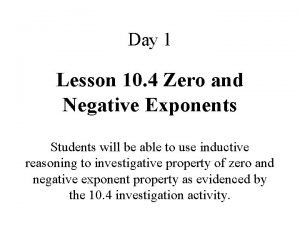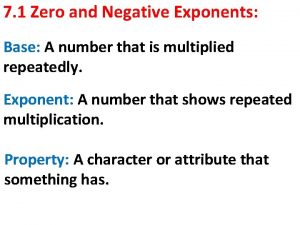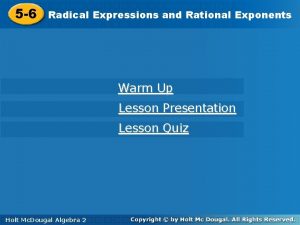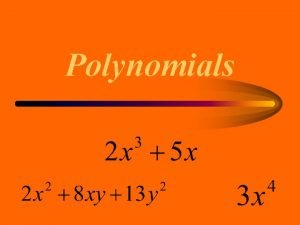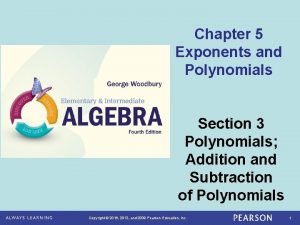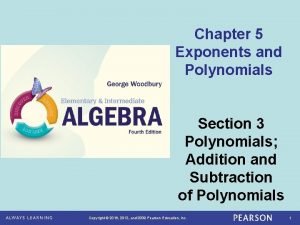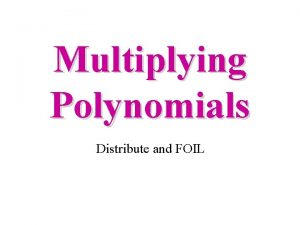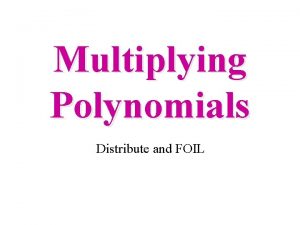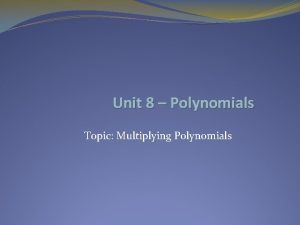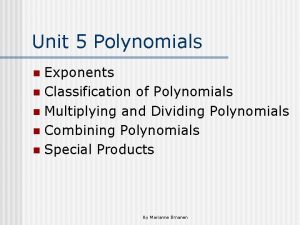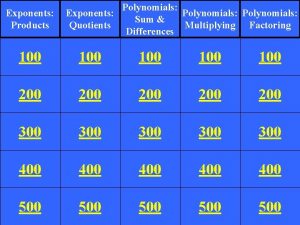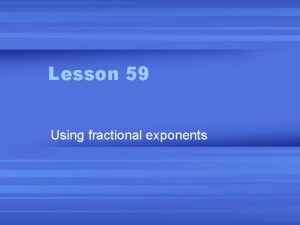Chapter 5 Exponents and Polynomials 5 1 Exponents











- Slides: 11

Chapter 5 Exponents and Polynomials

§ 5. 1 Exponents

Exponents that are natural numbers are shorthand notation for repeating factors. 34 = 3 • 3 • 3 3 is the base 4 is the exponent (also called power) Note by the order of operations that exponents are calculated before other operations. Martin-Gay, Beginning and Intermediate Algebra, 4 ed 3

Evaluating Exponential Expressions Example: Evaluate each of the following expressions. 34 = 3 • 3 • 3 = 81 (– 5)2 = (– 5) = 25 – 62 = – (6)(6) = – 36 (2 • 4)3 = (2 • 4)(2 • 4) = 8 • 8 = 512 3 • 42 = 3 • 4 = 48 Martin-Gay, Beginning and Intermediate Algebra, 4 ed 4

Evaluating Exponential Expressions Example: Evaluate each of the following expressions. a. ) Find 3 x 2 when x = 5. 3 x 2 = 3(5)2 = 3(5 · 5) = 3 · 25 = 75 b. ) Find – 2 x 2 when x = – 1. – 2 x 2 = – 2(– 1)(– 1) = – 2(1) = – 2 Martin-Gay, Beginning and Intermediate Algebra, 4 ed 5

The Product Rule for Exponents If m and n are positive integers and a is a real number, then am · an = am+n Example: Simplify each of the following expressions. 32 · 34 = 32+4 = 36 = 3 · 3 · 3 · 3= 729 x 4 · x 5 = x 4+5 = x 9 z 3 · z 2 · z 5= z 3+2+5 = z 10 (3 y 2)(– 4 y 4) = 3 · y 2 (– 4) · y 4 = 3(– 4)(y 2 · y 4) = – 12 y 6 Martin-Gay, Beginning and Intermediate Algebra, 4 ed 6

The Power Rule for Exponents If m and n are positive integers and a is a real number, then (am)n = amn Example: Simplify each of the following expressions. (23)3 = 23· 3 = 29 = 512 (x 4)2 = x 4· 2 = x 8 Martin-Gay, Beginning and Intermediate Algebra, 4 ed 7

The Power of a Product Rule If n is a positive integer and a and b are real numbers, then (ab)n = an · bn Example: Simplify (5 x 2 y)3 = 53 · (x 2)3 · y 3 = 125 x 6 y 3 Martin-Gay, Beginning and Intermediate Algebra, 4 ed 8

The Power of a Quotient Rule If n is a positive integer and a and c are real numbers, then Example: Simplify Martin-Gay, Beginning and Intermediate Algebra, 4 ed 9

The Quotient Rule for Exponents If m and n are positive integers and a is a real number, then as long as a is not 0. Example: Simplify the following expression. Martin-Gay, Beginning and Intermediate Algebra, 4 ed 10

Zero Exponent a 0 = 1, as long as a is not 0. Example: Simplify each of the following expressions. 50 = 1 (xyz 3)0 = x 0 · y 0 · (z 3)0 = 1 · 1 = 1 –x 0 = –(x 0) = – 1 Martin-Gay, Beginning and Intermediate Algebra, 4 ed 11
 6-1 rational exponents and properties of exponents
6-1 rational exponents and properties of exponents Lesson 5 negative exponents
Lesson 5 negative exponents How to multiply polynomials
How to multiply polynomials How can you use polynomials in real life
How can you use polynomials in real life How to add polynomials fractions
How to add polynomials fractions Rules for dividing polynomials
Rules for dividing polynomials Pg
Pg Zero and negative exponents examples
Zero and negative exponents examples Exponents algebra 2
Exponents algebra 2 Zero and negative exponents worksheet
Zero and negative exponents worksheet 7-1 zero and negative exponents
7-1 zero and negative exponents 5-6 radical expressions and rational exponents
5-6 radical expressions and rational exponents
